| HOME | PROFILE | SERVICES | MEETINGS & INCENTIVES | TRANSPORT | TOURS | PACKAGES | STUDENTS | CONTACT US |
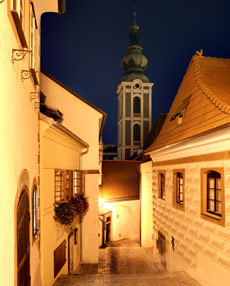
CZECH REPUBLIC
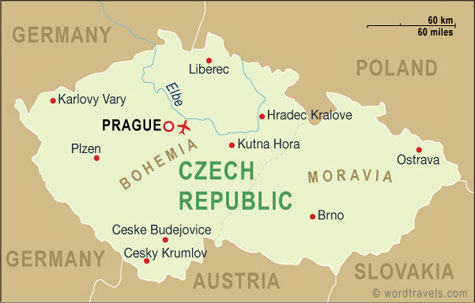
During the past few decades the Czech Republic has slowly been emerging as a popular tourist destination, favoured particularly by the discerning traveller seeking culture and charm rather than pizzazz and parties.
However, most visitors still tend to explore no farther than the capital, Prague. Fewer than 10 percent of tourists venture into the countryside, which means they are missing out on a treat. Prague, westernised and cosmopolitan, is a beautiful city of spires and a visual feast of medieval, baroque and art nouveau architecture. Leave the city behind and visitors will find a magnificent undulating landscape of mountains and plains, forests and farmland.
The Czech Republic is divided into two geographic and cultural sections, Bohemia and Moravia. Bohemian spa towns and laid-back Moravian wine villages seem to be in a time warp, welcoming visitors as though they are living museums of a refined and relaxed rural lifestyle. There are more than 100 castles dotted around the countryside, ranging from forbidding fortresses to elegant chateaux, all open to the public.
Czech Republic Attractions
Sightseeing in the Czech Republic gets you the very best of classical Europe combined with the charm and spark of a truly original country. Most visitors spend their time in Prague, enjoying the beauty of the medieval buildings and evocative scenery of the river-front location, while sampling the cultural delights of the dynamic live music and theatre scene.
Beyond Prague is a host of delights unjustly neglected by foreign visitors. These include world-class attractions such as picturesque Ceský Krumlov, the fascinating ossuary of Hutna Korta and Karlsbad, the queen of the Czech republic's many spa resort towns.
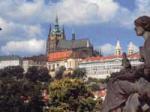 The Castle District (Hradcany)
The Castle District (Hradcany)
The Castle District stretches across the top of the hill overlooking the city and incorporates the best churches and museums in Prague set around three courtyards, immaculate gardens, fortifications and state apartments. The dominant feature is St Vitus Cathedral occupying most of the third courtyard. The Castle was founded in the 9th century and is still the official residence of the president. The Old Royal Palace was home to the Kings of Bohemia from the 11th to the 17th centuries. The Royal Apartments and Vladislav Hall, where Bohemian knights once jousted, kings were throned and presidents are sworn into office, can be visited, as well as the little chapel next door. Next to the red façade of the Romanesque Basilica of St George, lies the Benedictine Convent, housing the National Gallery’s remarkable collection of old Bohemian art. Behind the gallery is the picturesque cobbled alley known as Golden Lane, a row of 16th-century tradesmen’s cottages, brightly coloured and built into the fortifications. Visitors can watch the Changing of the Guard on the hour every hour, with the fanfare and flag ceremony included at noon.
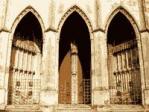 St Vitus Cathedral
St Vitus Cathedral
Situated within the Castle Complex, the spires of St Vitus Cathedral, an elegant but domineering French Gothic structure, soar above the ramparts. It is the county’s largest church containing numerous side chapels, frescoes, tombstones and beautiful stained glass windows and it literally sparkles with all the finery inside. The most ornate chapel contains the tomb of St Wenceslas, the ‘Good King Wenceslas’ of the Christmas carol, which has become something of a pilgrimage site. The Coronation Chamber houses the Bohemian Crown Jewels and the Crypt is where most of the Kings and Queens of Bohemia have their final place of rest. The southern entrance to the cathedral, the Golden Gate, is decorated with a richly gilded coloured mosaic representing the Last Judgement, dated from 1370, and it is one of the artistic treasures found in the Castle District. It is possible to climb the 287 steps of the tower for magnificent views over the city.
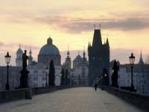 Charles Bridge (Karluv Most)
Charles Bridge (Karluv Most)
The pedestrian Charles Bridge serves as the focal point for tourists and is the most photographed feature of the city. Construction began in 1357 replacing the earlier Judith Bridge of which the only remaining part is one of the towers at the Malá Strana gate that can be climbed for a view of the city. Up until 1841 this was the only bridge in the city. Throngs of people pick their way through the happy congestion caused by buskers, artists and musicians lining the bridge, positioned between the saintly sandstone statues that make this the most picturesque and lively of attractions.
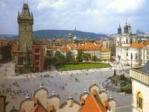 Old Town Square (Staromĕstské Námestí)
Old Town Square (Staromĕstské Námestí)
The heart of the old city and the market place since the 11th century, the Old Town Square is Prague’s prettiest and most lively square with historical facades and a cobbled surface. It still hosts a variety of markets, especially the yearly Christmas market which is enchanting. In the centre is the odd Art Nouveau monument to the religious reformer, Jan Hus, a national symbol for the Czech people. The Old Town Hall features an ornate Gothic Astronomical clock showing three different times, in front of which throngs of people gather on the hour to watch the brief mechanical performance of apostles, Christ, a skeleton and a rooster. Tourists can climb the tower for a behind the scenes look at the mechanics as well as a view from the top. On opposite sides of the square are two magnificent churches: Prague’s greatest Baroque building, St Nicholas, with its distinctly visible dome, and the more striking Týn Church, a fabulous Gothic structure with its twin spires a noticeable feature on the Prague skyline.
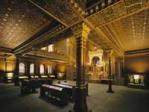 The Jewish Museum
The Jewish Museum
The Jewish Museum is the largest and most authentic of its kind in Central Europe with one of the most extensive collections of Judaic art in the world. Situated in the old Jewish Quarter, exhibitions are spread over a variety of buildings and synagogues, including the Maisel, Spanish, Klausen and Pinkas Synagogues, the Ceremonial Hall, the Old Jewish Cemetery, the Robert Guttmann Gallery and the Education and Culture Centre. The origins of the collection are astonishing in their atrociousness. Objects from 153 Jewish communities throughout Bohemia and Moravia were brought to Prague by the Nazis in 1942, to be used in a planned 'museum of an extinct people' after their extermination programme was complete. The Pinkas Synagogue was turned into a Jewish memorial after the Second World War and its walls are covered with the names of the Czech victims, the communities they belonged to and the camps in which they perished. The Old Jewish Cemetery is a significant sight with over 12,000 tombstones visible, but the number of people buried here is much greater due to the earth layering system carried out to create space. The oldest tombstone dates back to 1439. Together with the Old-New Synagogue, the oldest surviving example of the medieval twin nave style, the cemetery is one of the most important historic sites in the Jewish Quarter.
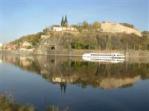 Vysehrad
Vysehrad
Vyšehrad, a hill fort perched on a rock above the river, is an inseparable part of the city skyline. The twin spires of the Neo-Gothic Saints Peter and Paul Church are visible from afar and the façade has beautiful carvings. No other site has as much distinction attached to it. Behind the church is the Slavin Cemetery where many distinguished Czech artists, scientists and academics are buried. From the battlements the view of the Vltava valley is superb.
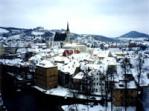 Cesky Krumlov
Cesky Krumlov
This small medieval town in Southern Bohemia is one of the most picturesque in the country, nestled in the S-bend of the River Vltava and dominated by the fairytale Chateau on the ridge overlooking the town. Its appearance has remained unchanged since the 18th century and it is a delight to wander through the traffic-free old town with its cobbled lanes, ramshackle red-tiled roofs and lopsided colourful houses providing many picture postcard opportunities. The Castle on the hill, greatly enriched by the Italian Renaissance style, has fine views of the town setting with covered walkways, courtyards and terraced gardens where theatre and music productions are held. Since the town was designated a UNESCO World Heritage Site in 1992, the summer months have become somewhat crowded. It is no longer a sleepy secret but a buzzing tourist haven.
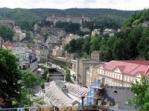 Karlovy Vary (Karlsbad)
Karlovy Vary (Karlsbad)
The town of Karlovy Vary, also known as Karlsbad, is the Queen of the Czech republic's many spa resort towns. It is a pretty Victorian place with elegant boulevards, elaborate colonnades and brightly coloured buildings lining the picturesque river valley, and the surrounding forested hillsides are a peaceful and therapeutic place in which to walk. The main focus of the town is health, and at the centre of attention are the 12 hot springs containing a mineral content rich in restorative and healing properties. The mineral drinking fountains in the colonnades were once the haunt of the European aristocracy, and today the local people gather to fill their quaint little drinking cups, sipping and strolling in the fresh air, encouraging the water to work its magic on their digestive tracts or metabolic disorders. If that doesn't work the locally made Becherovka liqueur is hailed as the 13th spring. Although most of the spa pools and sanatoriums are reserved for people undergoing treatment, visitors can still swim in the heated pool above the Thermal Sanatorium. There is plenty of excellent accommodation, unique souvenirs from the area and a myriad of relaxing opportunities to be found.
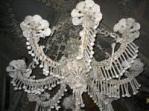 Kutna Hora
Kutna Hora
In the 14th century Kutna Hora was the second biggest town in Bohemia after Prague due to the discovery of silver. Today visitors come to appreciate the history of a once booming town where the Royal Mint was founded, and to marvel at the architecture of this UNESCO World Heritage Site. Its greatest monument is the exquisite church of Santa Barbara, built to rival Prague's St Vitus Cathedral, a pinnacled Gothic achievement financed by the miners and dedicated to their patron saint Barbara. Among the town's many churches and attractions is the Hrádek Mining Museum, popular for its medieval mineshaft tours. The bizarre but fascinating Gothic ossuary, decorated with the bones of about 40,000 people and arranged into shapes, notably chandeliers, a coat of arms and pyramids, is a macabre attraction
Czech Republic Events
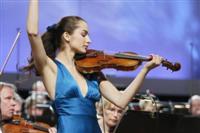
Prague Spring International Music Festival
Venue: Various
Date: 12 May to 3 June 2009
Prague Spring has become one of the most prestigious classical music festivals in Europe, presenting exceptional artists, orchestras and chamber music ensembles of international acclaim. Every year the festival is traditionally opened and closed by the Prague Symphony Orchestra. The festival also remembers important anniversaries in the music world by including works by the composers concerned.
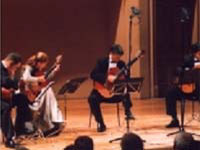
Prague Autumn Festival
Venue: Prague State Opera Municipal House Rudolfinum
Date: 12 September to 1 October 2009
This international festival of classical music ends the European summer music festival season and has gained renown for its programme of celebrated musicians.
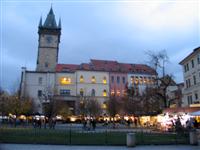
Christmas Markets
Venue: Old Town Square, Wenceslas Square
Date: 28 November 2009 to 1 January 2010
Christmas in Prague is a delightful season made special by the traditional Christmas markets that sparkle with lights and colourful decorations, that resound with Christmas music and smell of hot mulled wine, sausages and gingerbread. Brightly decorated wooden huts sell Czech handicrafts such as puppets, candles, wooden toys and jewellery, alongside traditional food and drinks. In Old Town Square, local and international choirs and musical ensembles sing Christmas songs, and a wooden stable recreates the Bethlehem manger scene with live animals. Other festive attractions include an open-air ice rink and the enormous Christmas tree ablaze with colourful lights.
Public Holidays
2009 |
2010 |
|
New Year's Day |
1 Jan |
1 Jan |
Easter Monday |
13 Apr |
5 Apr |
May Day |
1 May |
1 May |
1945 Prague Uprising |
5 May |
5 May |
Liberation from Fascism Day |
8 May |
8 May |
St Cyril & St Methodius' Day |
5 Jul |
5 Jul |
John Huss Day |
6 Jul |
6 Jul |
Day of Czech Statehood |
28 Sep |
28 Sep |
Independence Day |
28 Oct |
28 Oct |
Students' Fight for Freedom and Democracy |
17 Nov |
17 Nov |
Christmas Eve |
24 Dec |
24 Dec |
Christmas Day |
25 Dec |
25 Dec |
2nd day of Christmas |
26 Dec |
26 Dec |
Airport
Czech Republic Airport - Prague-Ruzyne International Airport (PRG)
Full name: Prague-Ruzyne International Airport
Locations: The airport is situated 10 miles (16km) north west of Prague.
Time: GMT +1 (GMT +2 from last Sunday in March to last Sunday in October).
Contacts: Tel: +420 220 113 314.
Getting to the city: Cedaz minibus shuttles leave regularly for the city centre; they can drop passengers off at hotels throughout the city. The Airport Express provides the quickest transport to Prague Main Train Station. Public buses have regular services to all areas of Prague departing from the front of the arrivals hall. Public transportation (Tel: +420 800 191 817) fares are based on time of travel but a minimum 75 minute allotment for the ride to the city centre costs US1.20 and US$2.50 on the Airport Express. Cars can be hired at fixed rates (Tel: +420 220 113 892) or taxis (420 2 2056 1788) are available to the city centre which both should take about 30 minutes. Taxis should cost US$30 and depart from the outside the arrivals hall.
Car Rental: All the major car rental companies are represented at the airport, including Avis, Europcar, Hertz and Sixt.
Airport Taxis: Taxis are also available outside the Arrivals hall. For information and prebookings call +420(0)2 2056 1788. A taxi to the city centre should cost no more than CZK600 and take around 30 minutes. Agree this price with the driver before the journey begins as many licensed taxis are unmetered. Shared minibus taxis are also a cost effective option; call Cedaz on +420(0)2 2491 9240.
Facilities: There are a number of shops, bars, cafeterias and restaurants in the main terminal. Bureaux de change, ATMs and a bank are also available; the Travelex in the transit section is open 24 hours. Mobile phones can be rented from the Arrivals hall of Terminal North 1. Conference and meeting rooms can also be hired, and wireless Internet access is available in both terminals. Disabled facilities include wheelchairs and a transit car; passengers with special needs should contact their airline in advance.
Parking: There are abundant short and long-term parking facilities at the airport. Short-term parking is available in front of the north terminal, and there are more than 3,000 long-term parking bays.
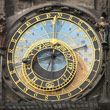
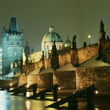
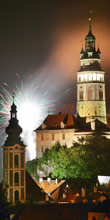
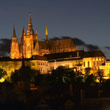
TRAVEL INFO |
|
©2006-2007 Rener Group. All rights reserved |
||
